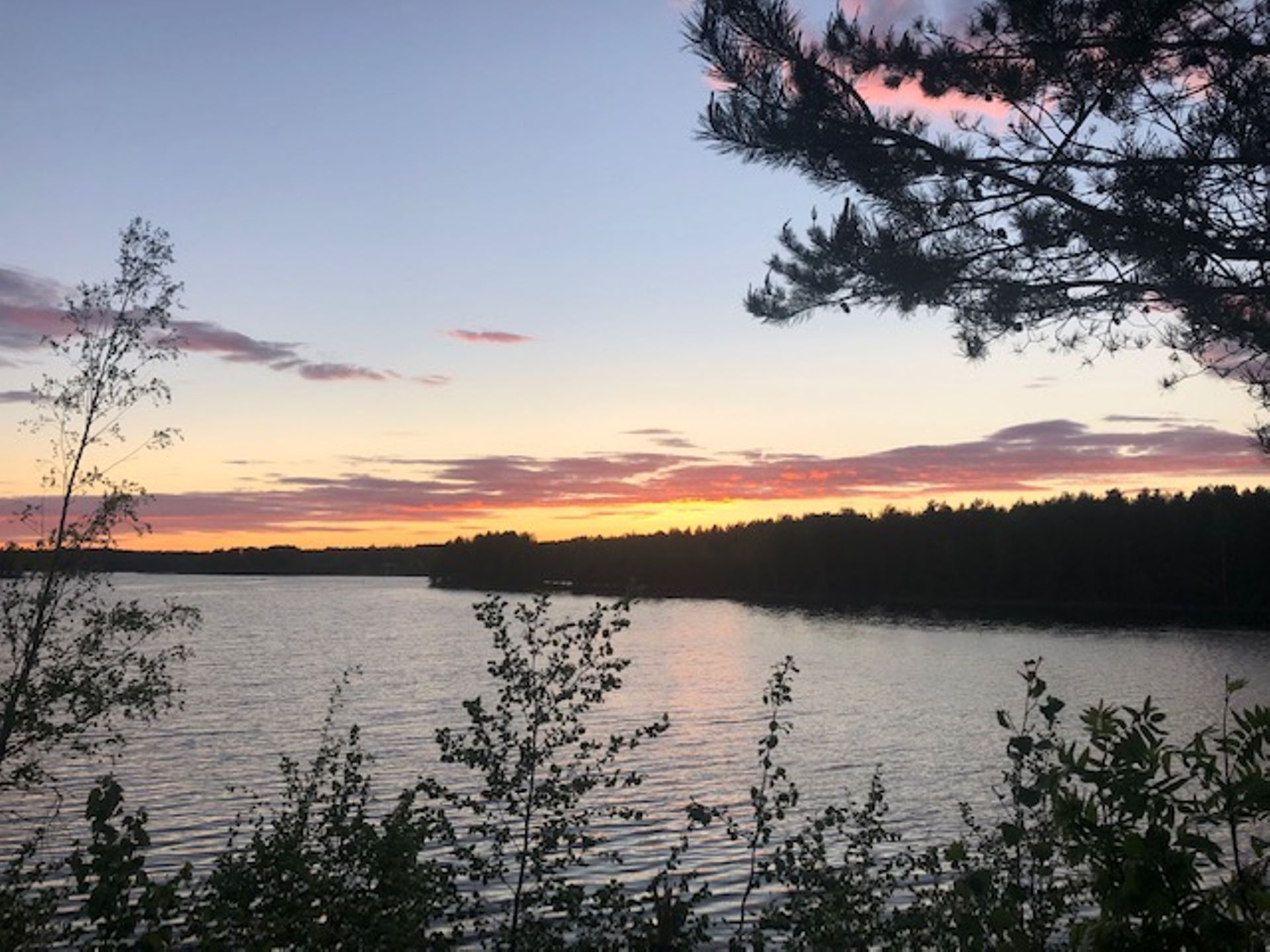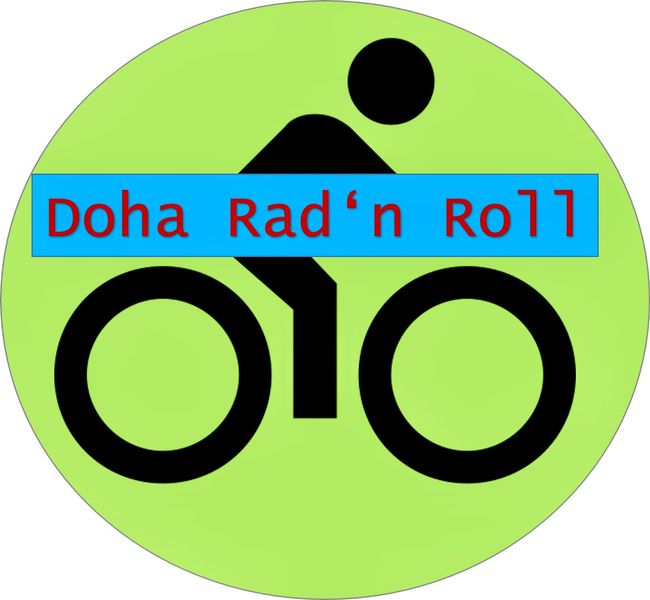Subotica - Szeged - Jimbolia
E phatlaladitšwe: 01.06.2023
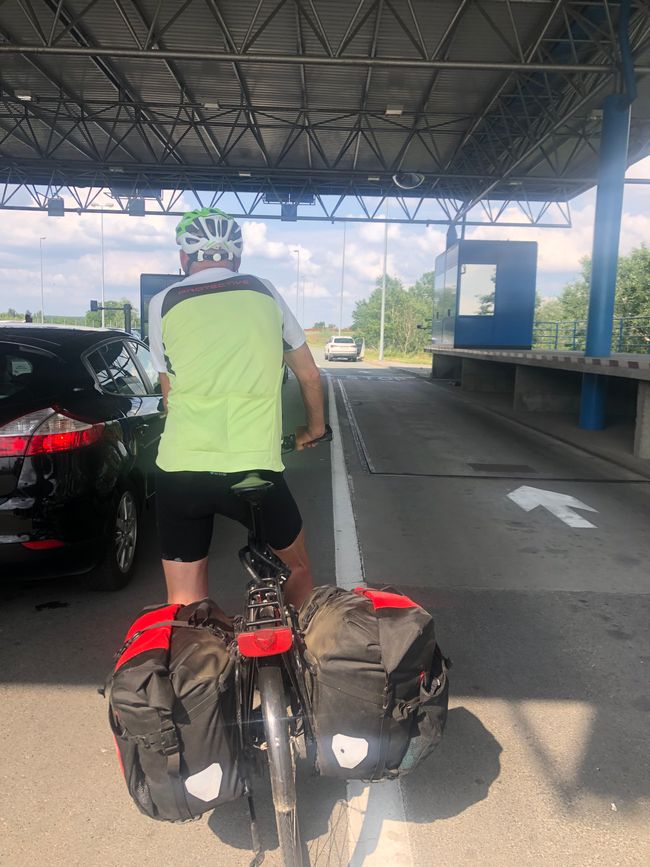
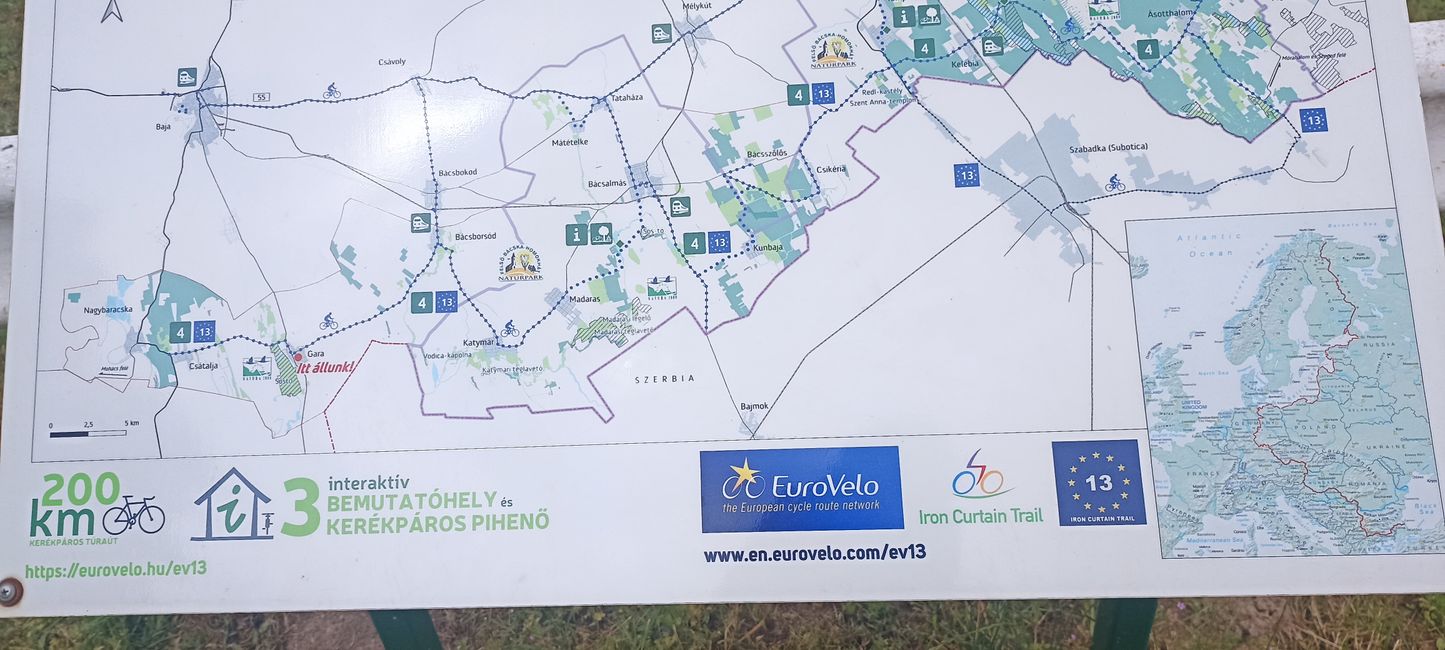
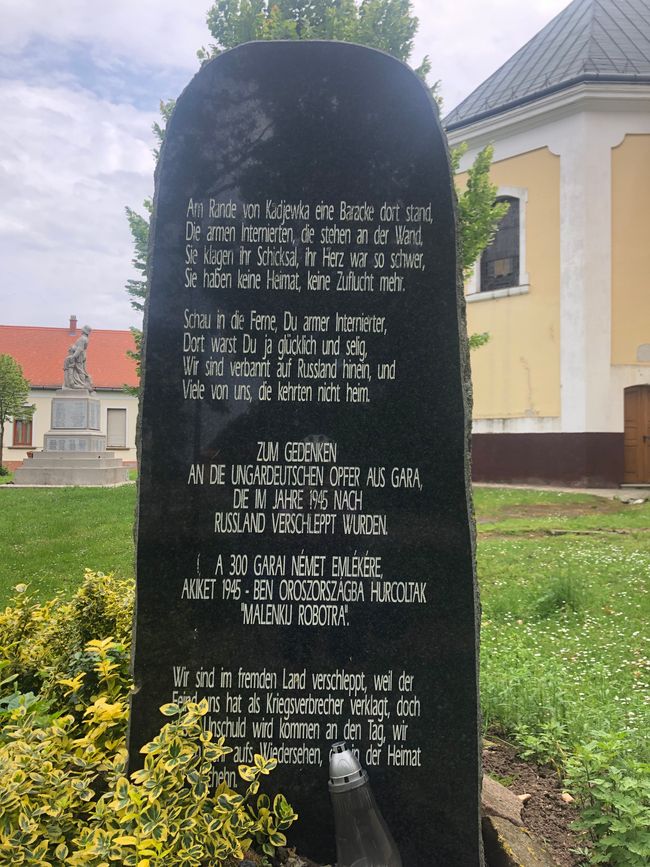
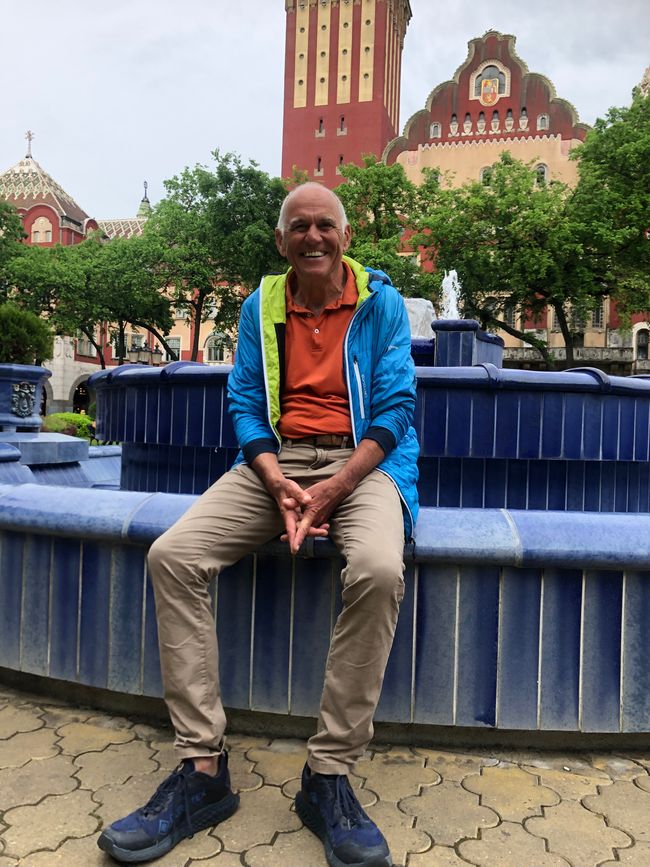
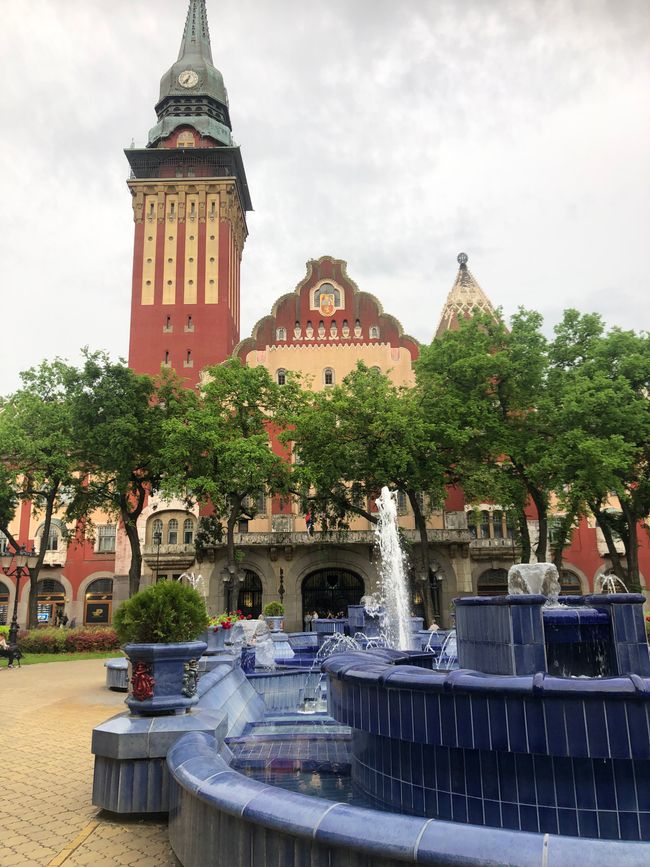
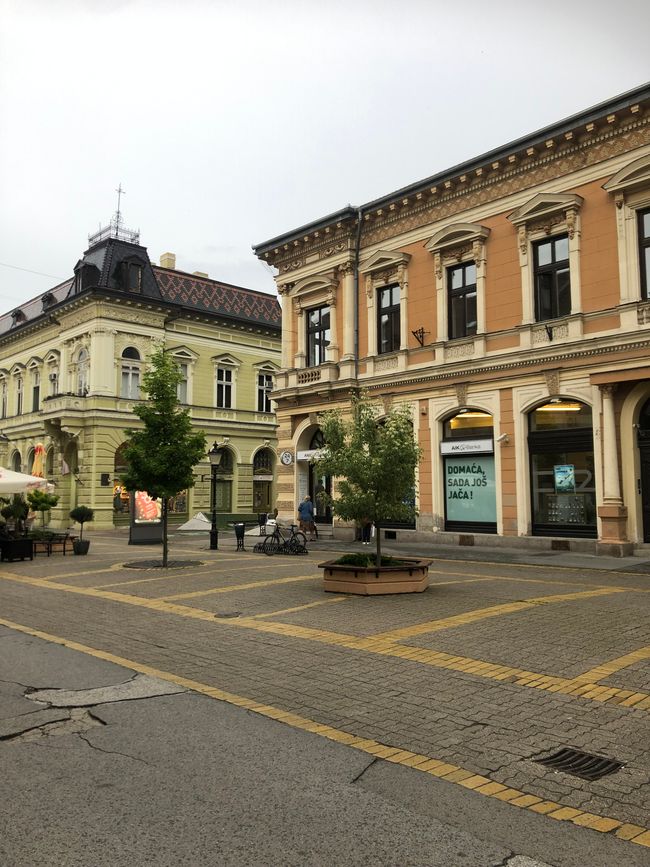
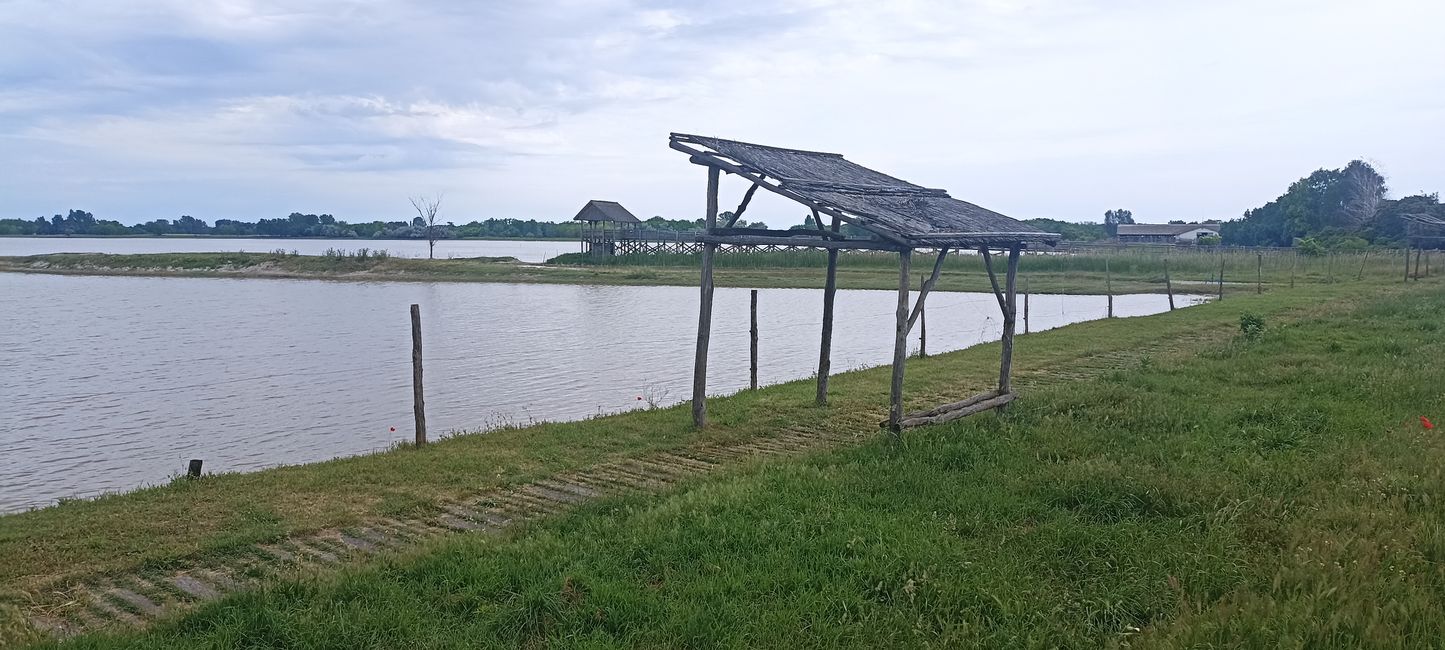
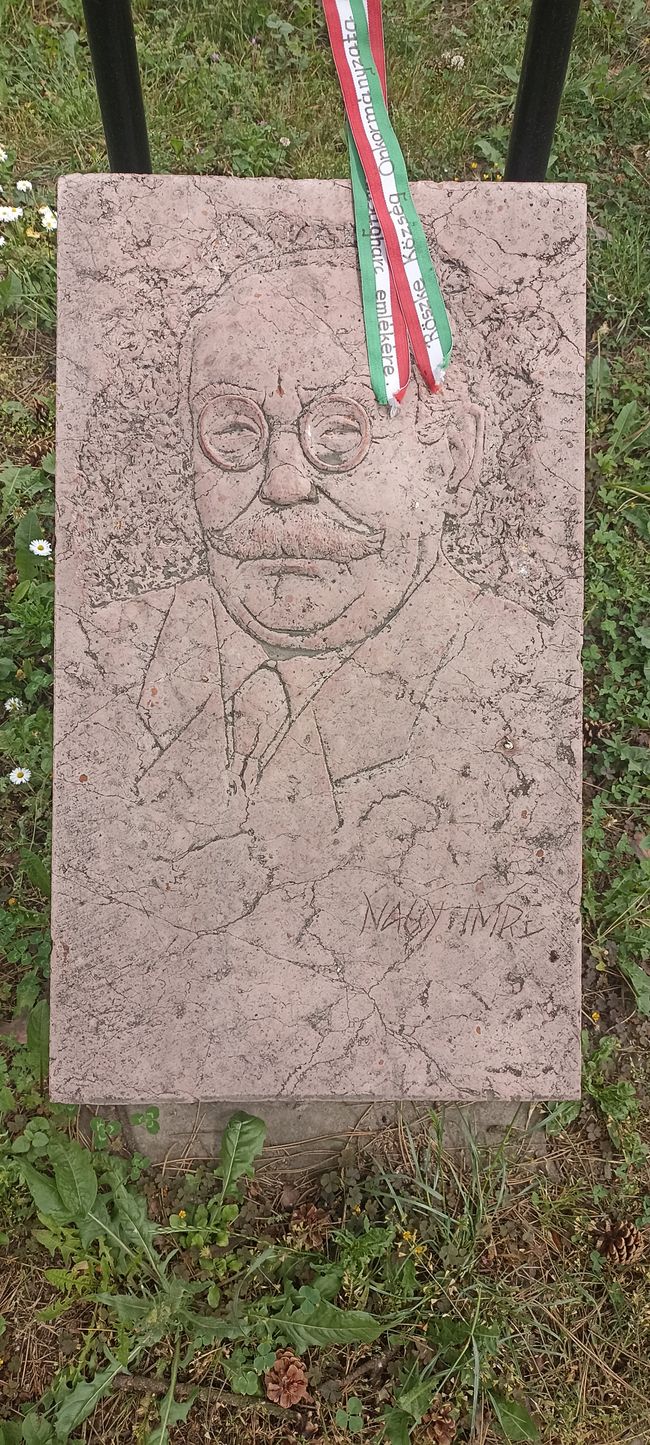
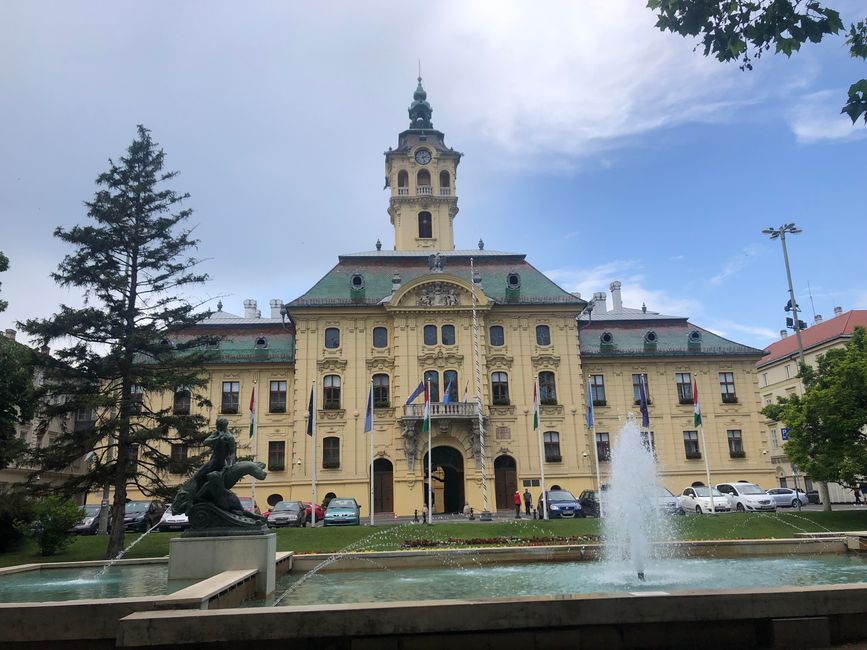
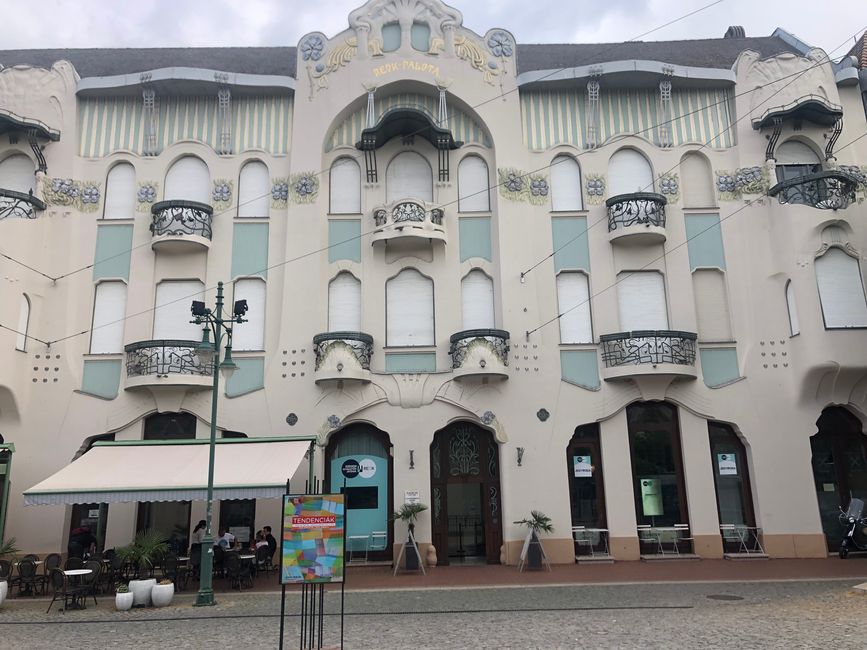
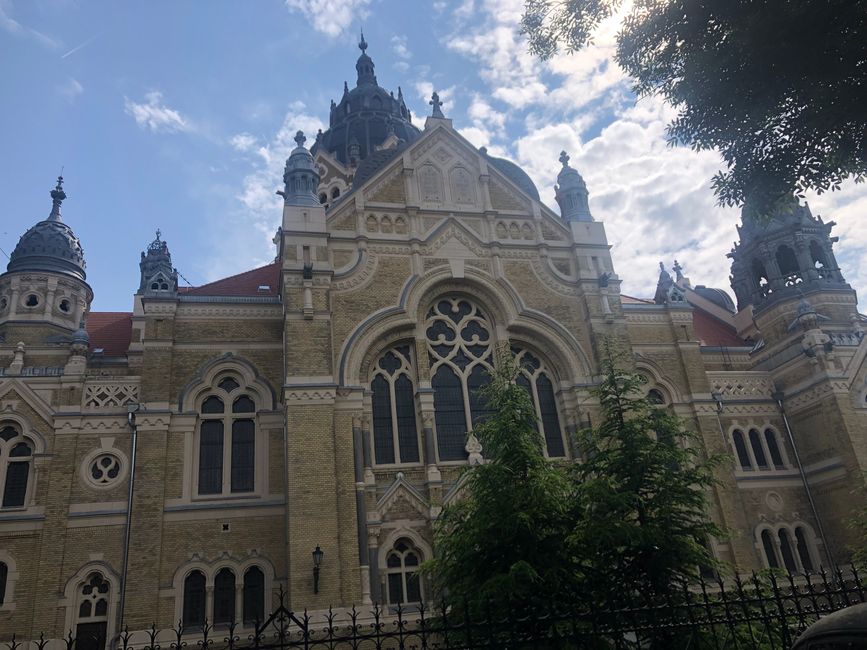
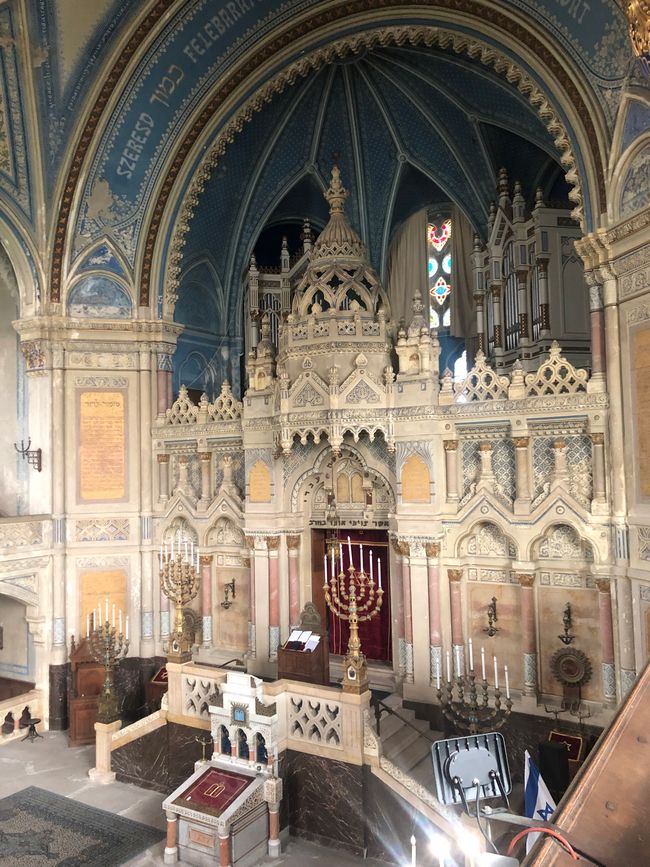
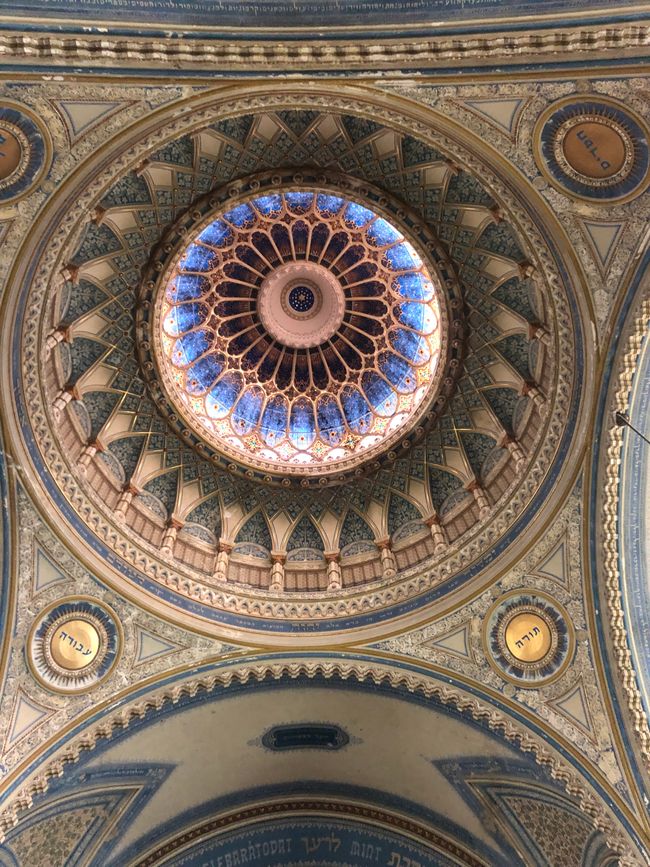
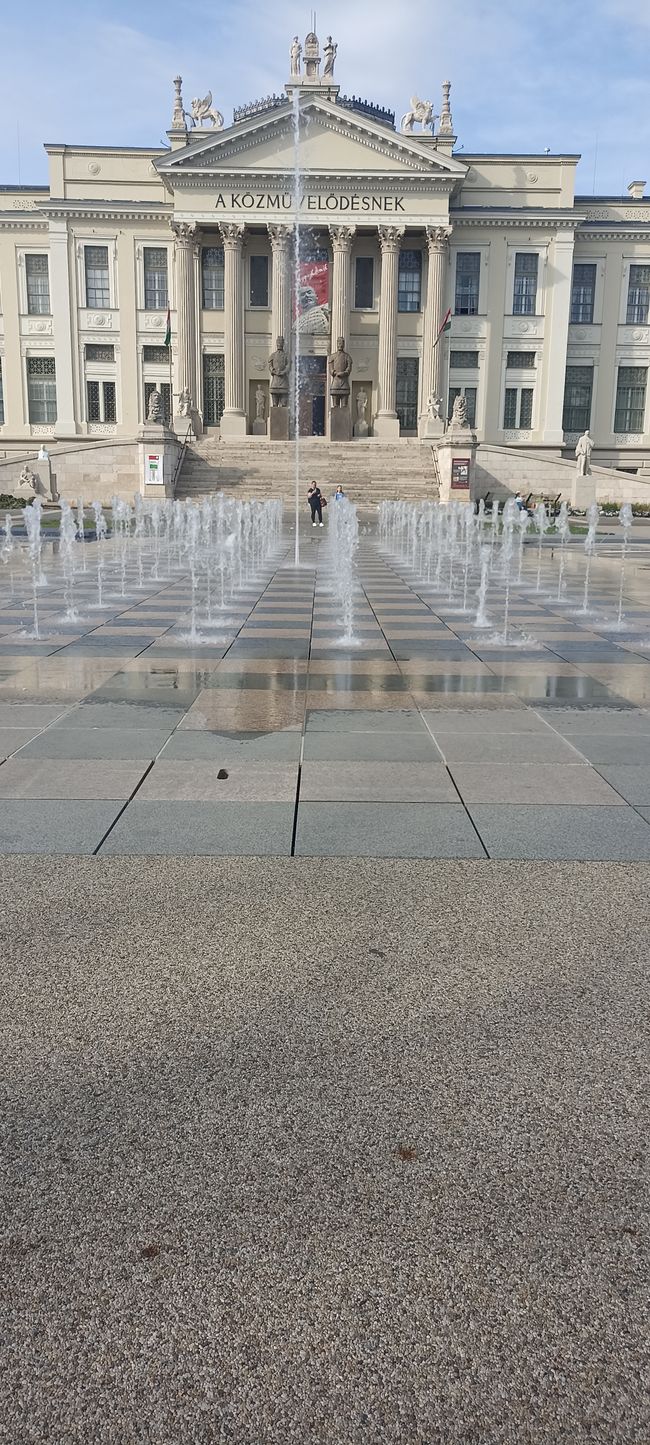
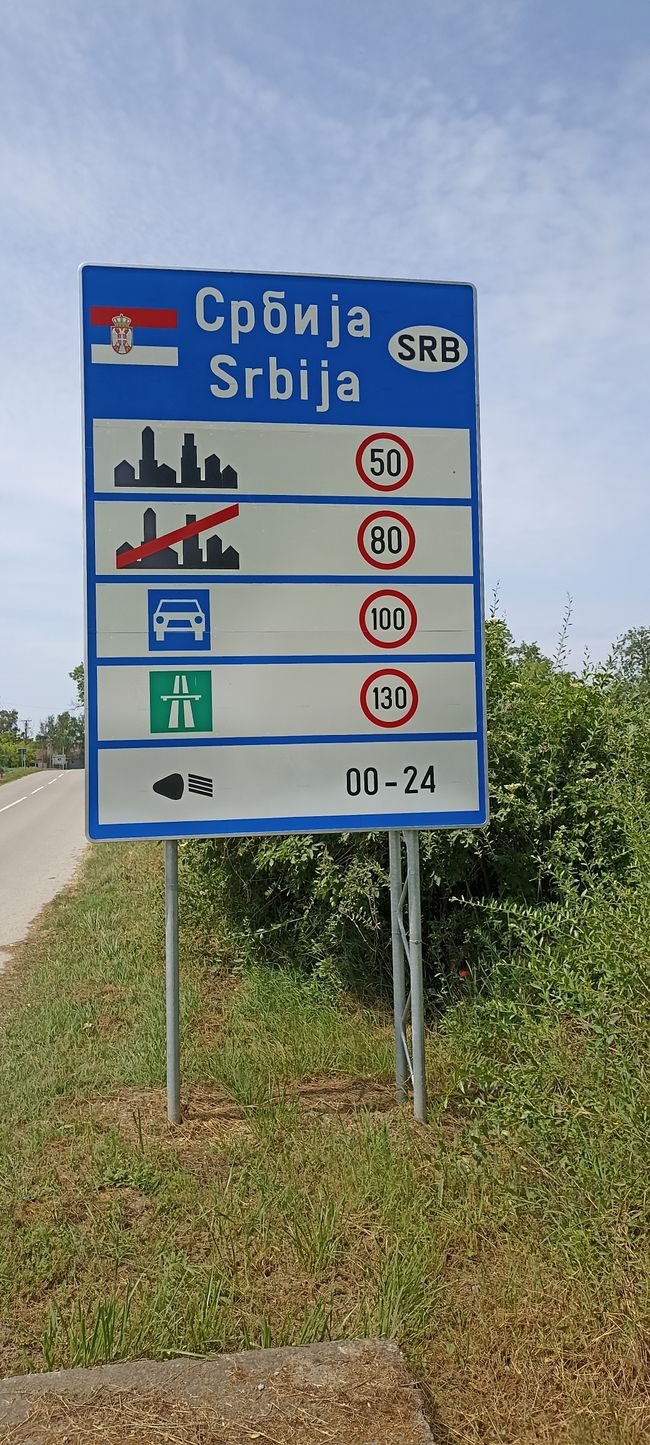
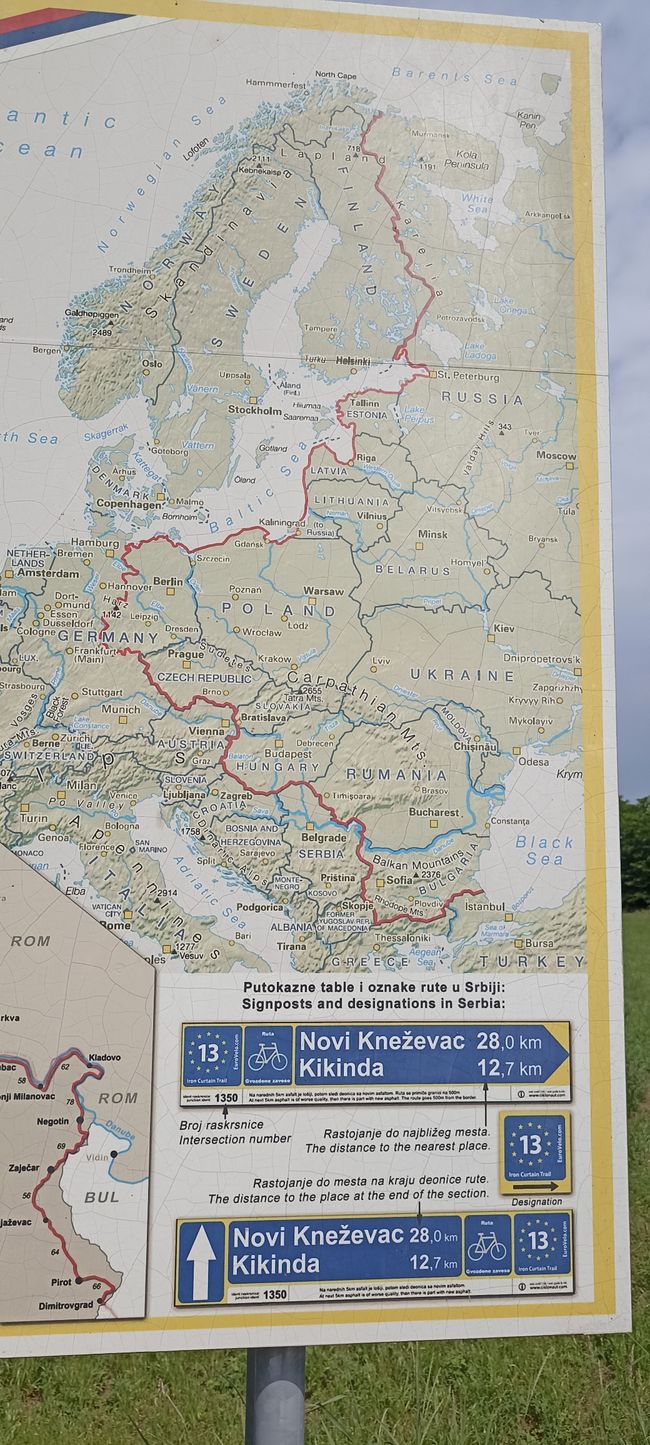

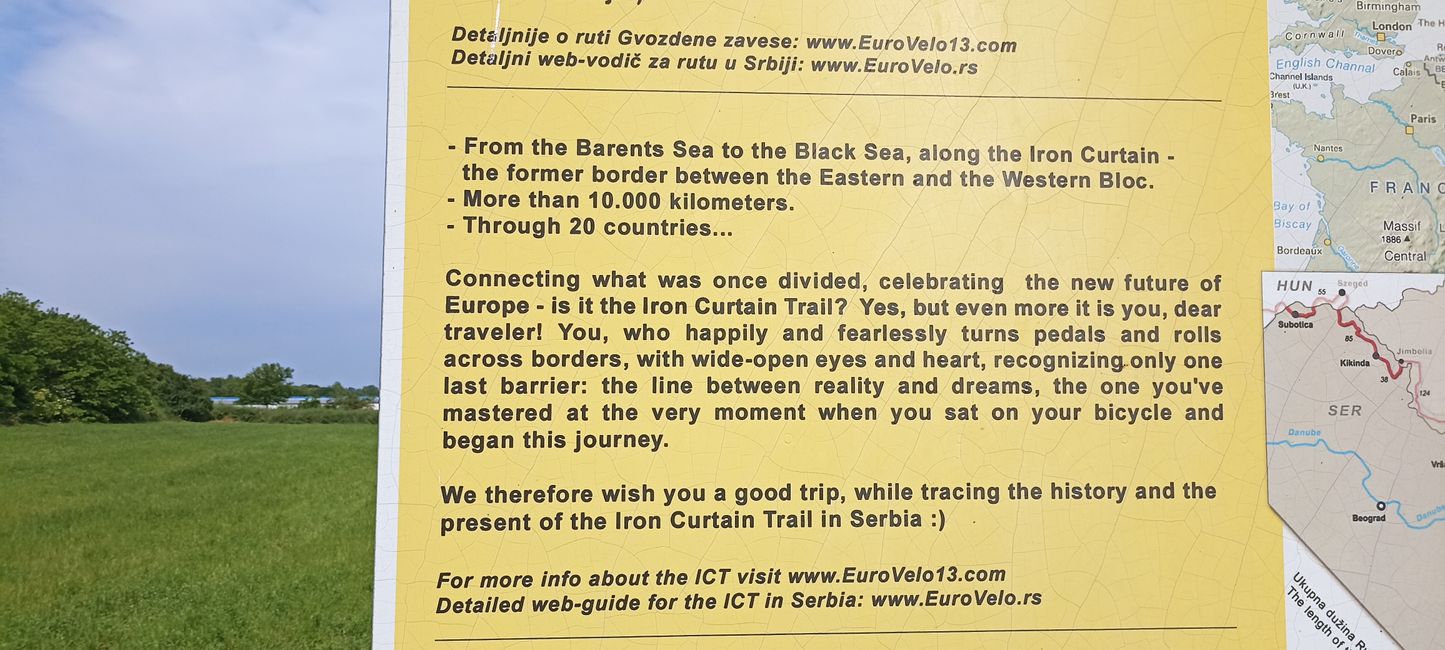
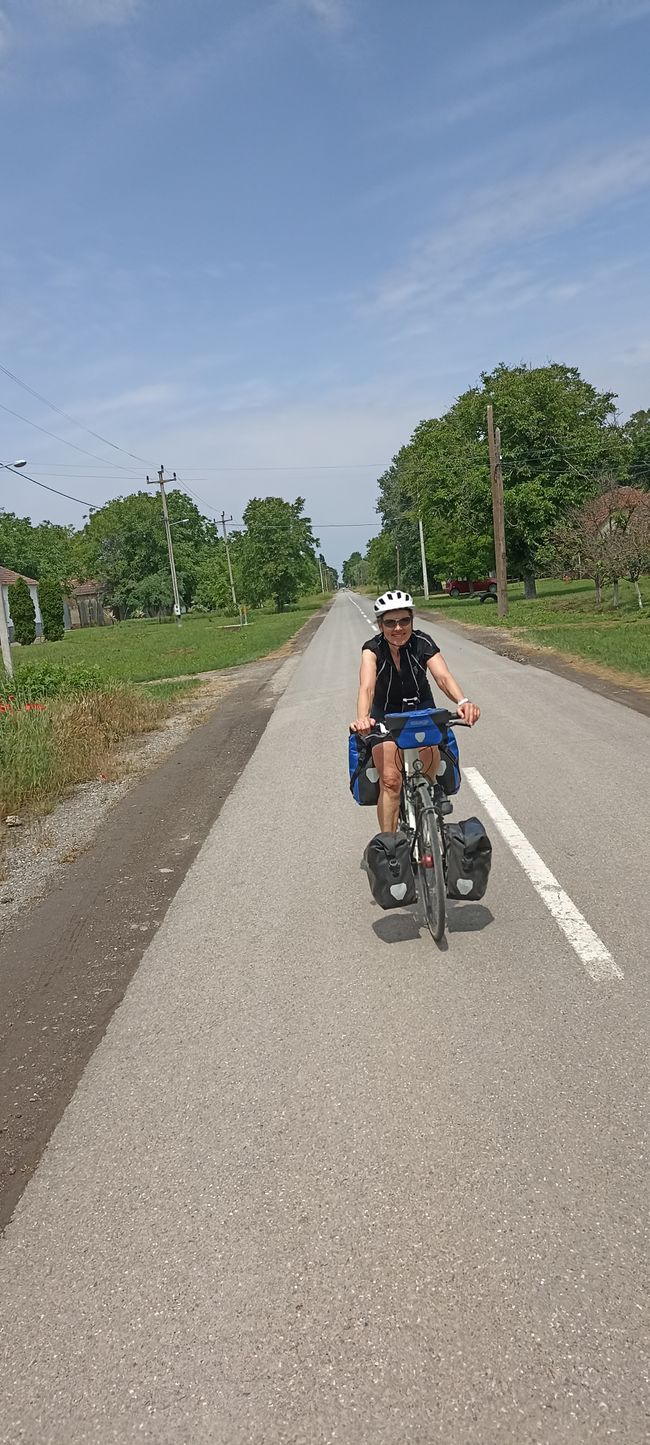
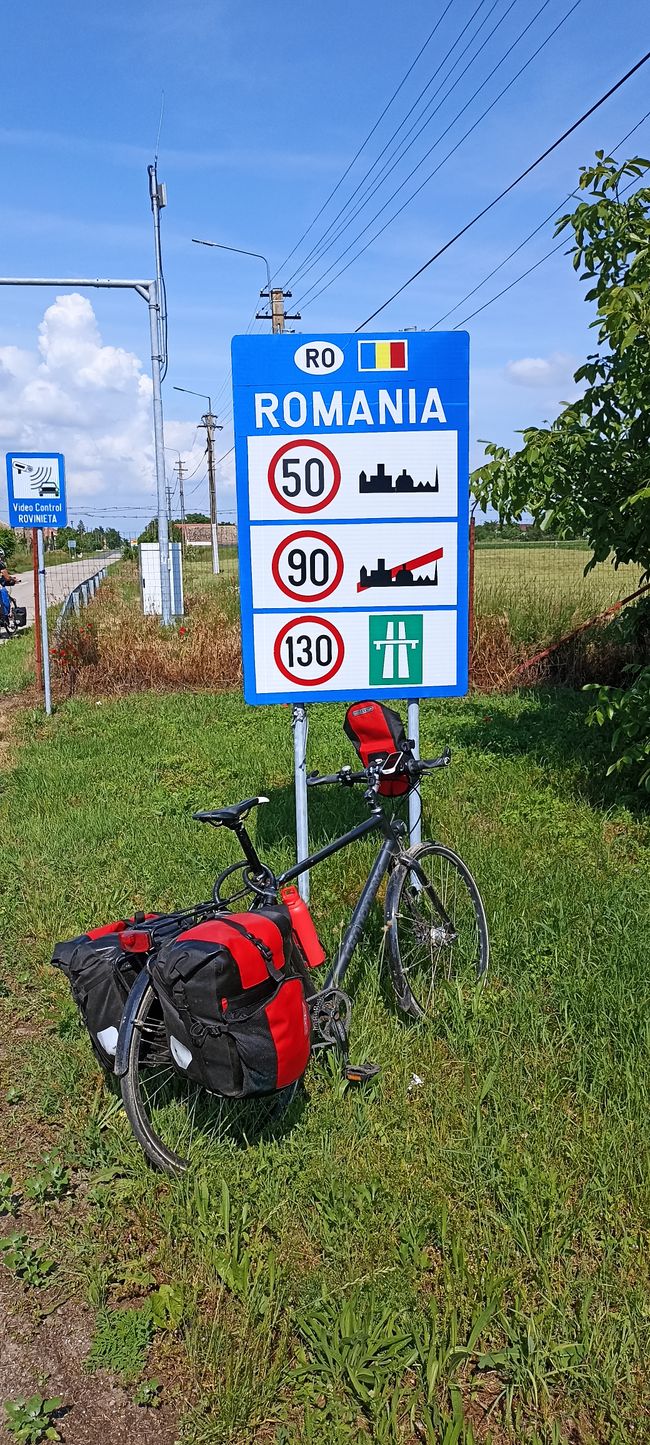
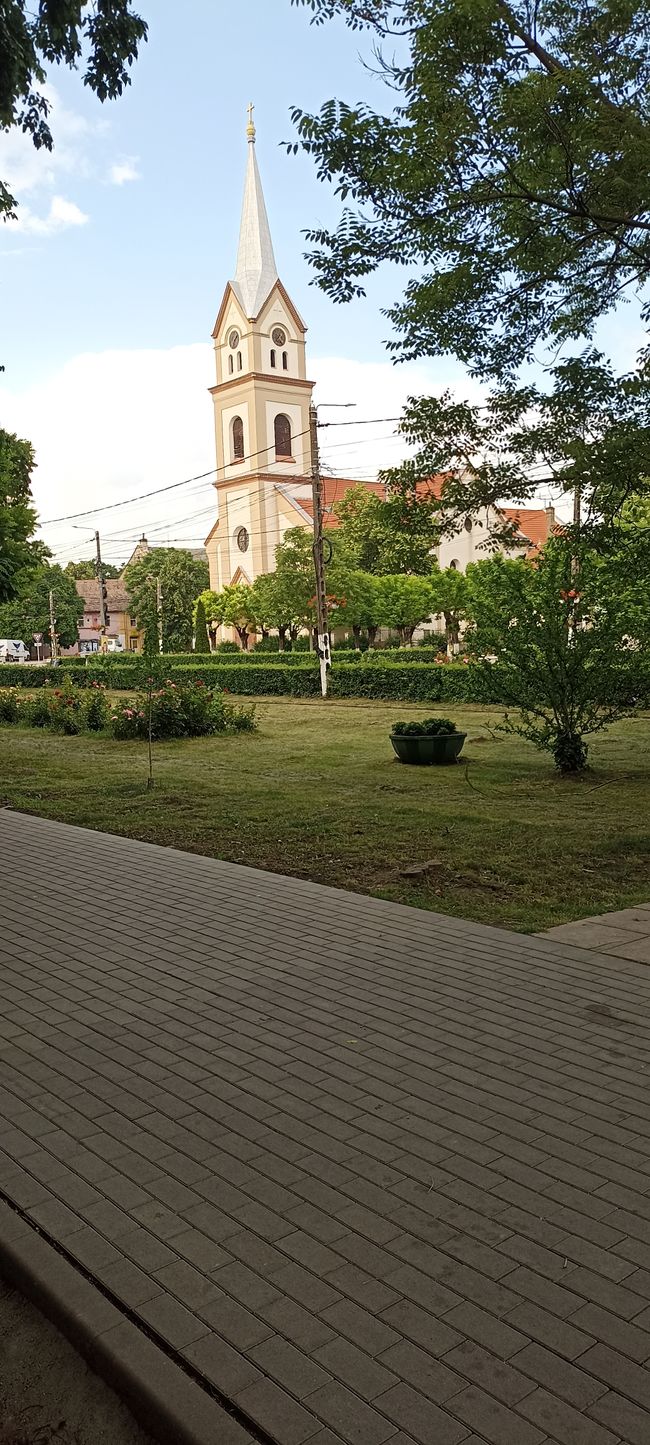
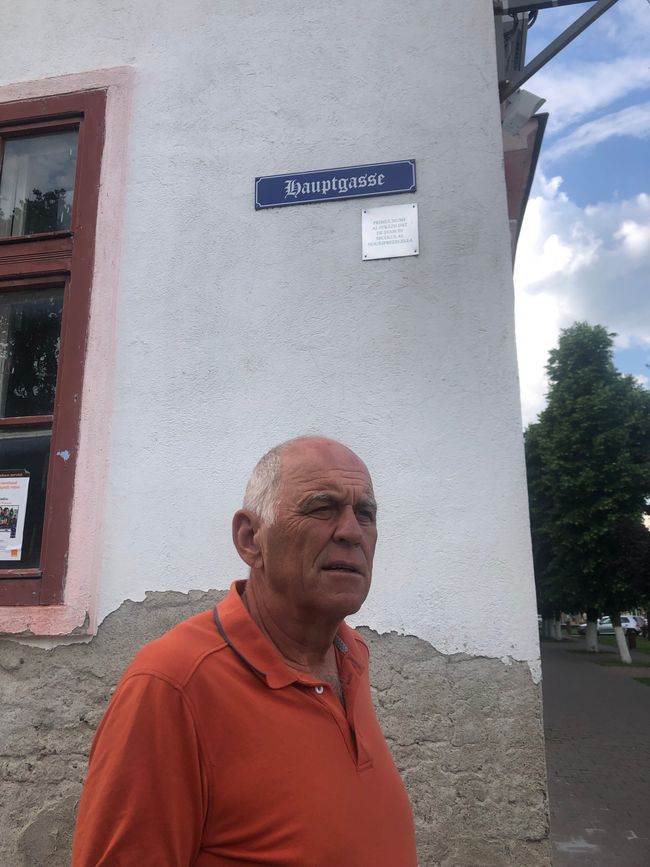
Ingwadiše go Lengwalo la Ditaba
ICT Day 4: Bezdan (SRB) - Subotica (SRB) 100 km
Although the start and end points of today's stage are in Serbia, we spend almost the entire day in Hungary. Only the 10 km in the morning to the Serbian-Hungarian border and the 12 km from the border to Subotica go through Serbian territory. Well, borders - lucky us, we don't know about that anymore, not even close in non-EU Switzerland. At the Serbian checkpoint, we ride our bikes past the waiting line of cars to the border station, where our documents are checked. Then the few hundred meters to the Hungarian side, where the mighty border fences on the right and left intimidate you. We wait behind a Vienna vehicle that is being thoroughly searched. The customs officer keeps asking about alcohol or cigarettes. They ask us the same question and make each of us empty a luggage bag. Dominique laughs at the procedure, fortunately, the customs officer is not offended by it. So we can pack everything back up and enter Hungary. We continue on a lonely road towards the north, and when we turn east towards Gara, we no longer encounter anyone. Almost "Finnish" conditions: the road straight as an arrow and the same image at the next turn. The next town comes after 15 to 20 km here, not after 50, and stretches over several kilometers. We pass through Gara, where a memorial stone commemorates the deportation of the Danube Swabians by the Russians. In 1944, around 300 Danube Swabians were deported to work in mines in Russia, and only a part of them returned to Gara in 1947, only to flee to Germany immediately afterwards. Because those who had not been deported had decided in October 1944 to leave their homeland and flee to Germany under great hardship. A few kilometers further, through fields of grain and rapeseed, we stop in Bácsálmas, a larger town where the Bunjevci ethnic group, the Catholic population, settled after the expulsion of the Turks. Later, the Danube Swabians were settled by the Habsburgs, who until the end of World War II accounted for more than two-thirds of the population in Almanchi. A Backnang memorial fountain commemorates the expulsion of the Danube Swabians in 1945. As early as 1959, the city council of the city of Backnang decided to assume sponsorship for the approximately 6,000 Danube Swabians who had lived in the Hungarian community of Bácsalmás until the events of 1945. It continues through deserted areas, where there are now occasional vineyards as well. We put on our rain gear for a short time to protect ourselves from the daily thunderstorms. At the next turn, we head south, first crossing the border into Serbia, which goes smoothly in our direction - in the opposite direction, a several-kilometer-long line has formed. Subotica, Serbia's fifth-largest city with over 100,000 inhabitants, is pulsating. Most of the buildings are in Art Nouveau style, with the large town hall being particularly impressive. In 1955, the film "I Often Think of Piroschka" with Lieselotte Pulver and Gunnar Möller was shot here. From Subotica, the former coach of the junior national team of the GDR, Jörg Berger, initially fled to Belgrade, where he obtained a counterfeit passport under the name Gerd Prenzel at the German embassy. He continued to Frankfurt on the "Orient Express". The Yugoslav customs officer at the border checked his passport, looked him straight in the eyes, and said, "Good luck in the West, Mr. Berger."ICT Day 5: Subotica - Szeged 55 km
Our stage today is short and flat again. We want to arrive in Szeged soon to have enough time to visit the city, which is the third largest city in Hungary. In the morning, after 25 km, we once again have to cross the border from Serbia to Hungary. We ride our bikes past the line of cars to the border station and, after a chat with the customs officer, a look at the intimidating, massive border fences, and the obligatory check of our documents, we are soon back on the lonely roads in southeastern Hungary. Like the past few days, we pass through deserted areas, past fields of grain and vineyards. In the border village of Röszek, there is a relief commemorating Imre Nagy, the Hungarian national hero who served as Prime Minister and advocated the idea of a national and human socialism, which is why he was removed from office and expelled from the party under pressure from the Soviets. During the Hungarian Revolution of 1956, he was reinstated and officially recognized the revolution in Hungary. Nagy formed a multi-party government, demanded parliamentary democracy, and advocated for Hungary's neutrality. After proclaiming neutrality and canceling his country's membership in the Warsaw Pact, Russian tank units entered Hungary and brutally suppressed the revolution. Nagy was sentenced to death in a secret trial and executed on the same day.The name of our destination today, Szeged, is most often associated with Szegedin Goulash, but despite intensive research, we can only find local restaurants serving Hungarian goulash soup. Almost everywhere in the traditional restaurants, there is Szeged-style fish soup - not bad. But we stop here on the banks of the Tisza River not only because of the food but also because of the abundance of sights. In 1895, the city was almost completely destroyed by a devastating flood. It managed to turn this disaster into an advantage and plan and design the city with international assistance. The result is a uniform cityscape with a mixture of Historicism and Art Nouveau. Truly impressive! Particularly dominant is the cathedral, the votive church, with its enormous size and high towers. Not any less worth seeing is the New Synagogue from 1903, which has survived all the turmoil and makes a brilliant impression both inside and out. It is the fourth largest Jewish temple in Europe. Also worth more than just a glimpse is the Neo-Baroque town hall on Szechenyi Square.
ICT Day 6: Szeged (HU) - Jimbolia (RO) 115 km - completely flat
Today, we have to cross the border twice again. First, we finally leave Hungary behind and say a quiet 'Viszlát' in this language that is so distant to us. Just under a year ago, we first entered Hungary in Fertöd and learned the importance of the Hungarian contribution to the fall of the walls and fences along the Iron Curtain. Now we had to see how the Hungarians erected new fences, which are supposed to secure Fortress Europe along the Hungarian-Serbian border. It almost physically hurts to see this. The people in Hungary have always been friendly, open, and helpful, but we don't have dark skin and are easily recognizable as tourists on bikes. For us cyclists, the Hungarians have put a lot of effort into developing the Iron Curtain Trail very well and providing suitable signage. In Serbia, we are greeted by a huge overview panel about the ICT and ride on a beautiful cycle path next to the hardly traveled road into the Serbian Banat in the province of Vojvodina, the flat region in northwestern Serbia. "Stand on a pumpkin, and you'll see Vienna," they like to joke here. Later, we continue on the lonely provincial roads, where concrete slabs dominate for a long time. The picture repeats itself: lonely houses by the roadside, wooden electricity and telegraph poles, and endless fields outside the villages. To make the monotony a little more apparent, here is the complete list of settlements on the Serbian side: Djala, Srpski Krstur, Novi Knezevac, Banatsko Arandelovo, Vrbica, Crna Bara, Mokrin, and Kikinda - all in 100 km. And on this stretch, you will only find a place to take a meaningful break after 70 km. In Mokrin, there is finally a nice café. A few hundred meters away, on the Romanian side, is the village of Teremia Mare, where handball player Hansi Schmidt was born in 1942. He stayed in Germany in 1963 and became an outstanding handball player there. All handball players reading this, please take another run-up to the delayed jump shot - in memory of Hansi Schmidt. In Kikinda, we turn east and cross the border into Romania - we are now so far east that we have to set our clocks one hour ahead. We are now in the area of the Banat Swabians and immediately meet former residents who return here from time to time. The Banat was settled in the 18th century, following the expulsion of the Ottomans, by order of Maria Theresa. People from southern Germany, Lorraine, and Alsace were recruited, especially second and third-borns who did not inherit anything and who were often married as Catholics, registered in Ulm, and sent down the Danube in so-called "Ulm boxes". This is probably where the term Banat or Danube Swabians comes from. Banat Swabian therefore resembles the Palatinate or Luxembourgish dialect more, as we heard from a man who was allowed to leave for Germany in 1982 as part of the family reunification. Ceaucescu made the German government pay well for this, 14,000 DM for each person leaving. They had to sell their house and property at a price prescribed by the Romanian government. A couple from Oggersheim, who was also able to leave in this way, explained why there were Germans of Romanian descent in the Banat after the war. In 1945, 33,000 Banat Swabians were deported to Russia as prisoners of war and forced laborers. After years of suffering in mines and heavy industries, they returned to the Banat or were taken to the SBZ (GDR). The couple from Ogersheim is here because of the Banat Days, which take place in Timisoara starting on Friday. For this, they have driven a replica of an Ulm box on a trailer. We want to meet them on Friday in Cathedral Square in Timisoara.Ingwadiše go Lengwalo la Ditaba
Karabo (3)
Lothar
Herrlich Harald , Hansi hat Heldenstatus !
Auf dem Rückweg gibts in Brasov auch einen INTERnationalen wie auch eine in Onesti .
SPORT HAT KEINE GRENZEN !!Harald
Des isch e so - wie man in der Schweiz zu sagen pflegt. everydayangel
Spannende Infos in den Reiseberichten verpackt! Und lustig, dass in Szeged kein Szegediner Gulasch zu finden war 🤔